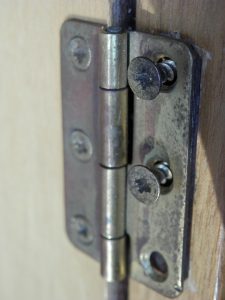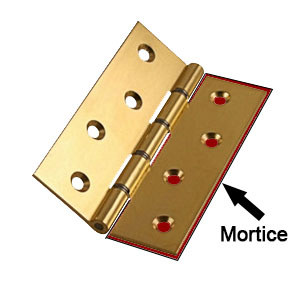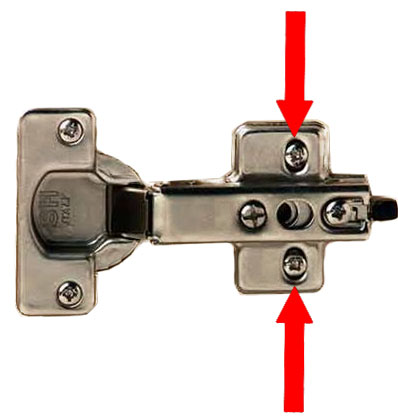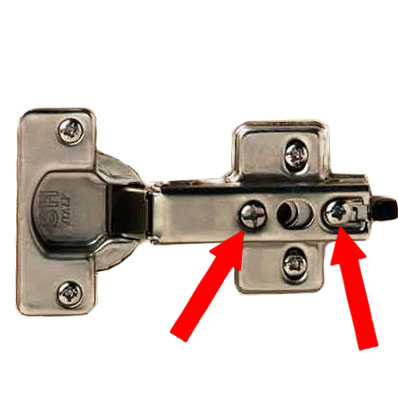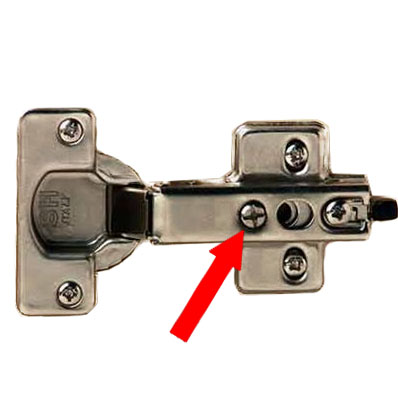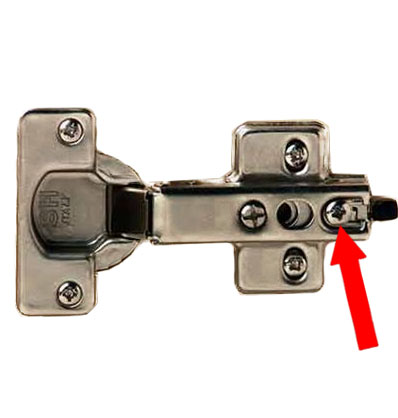If you’re having trouble with one of your doors, whether it’s internal or external, the cause may be the hinges. Often, it is assumed that the door hinges have worn out, but they may just need adjusting.
In this project guide, we have outlined the different ways in which you can adjust your door hinges, to ensure the door is working smoothly and looks its best.
Without further ado, let’s dive right in.
Table of contents
- How door hinges can cause issues
- How to adjust a door hinge
- How to adjust cupboard hinges
- Adjusting door hinges the right way
How door hinges can cause issues
Top hinge issues
Sometimes the top hinge of a door is only installed with short screws. If this is the case, over time the hinge will begin to pull away from the frame due to the weight of the door. This will result in the door sagging, and the top edge of the door may rub against the frame, resulting in the door not closing properly.
Mortice issues
On some doors, the mortice is too deep or too shallow. The mortice is the cut-out into which the hinge fits. If the mortice is too shallow, it is likely that the door won’t fit into the opening correctly. If the mortice is too deep, the door will have a gap on the strike side, and be too tight to the opposite side of the door frame. This will result in the door not closing properly.
Inset and backset issues
Another issue that can occur with door hinges is that the hinge sizes do not always match the insets and backsets of the door frame. If the inset is too large, the door may not close properly, as it is too close to the frame. If there is too little inset or backset, there will be a gap between the door and the frame.
How to adjust a door hinge
Tighten the top hinge
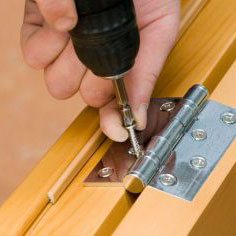 One of the main causes of issues associated with door hinges is simply that the hinges have become loose. Although it is widely believed that having three hinges on a door means the weight is spread evenly, this is not the case – the top hinge is under the most pressure from the weight of the door.
One of the main causes of issues associated with door hinges is simply that the hinges have become loose. Although it is widely believed that having three hinges on a door means the weight is spread evenly, this is not the case – the top hinge is under the most pressure from the weight of the door.
So, the top door hinge might just have come loose if you are experiencing issues with your door closing and appearing to be at an angle. The first thing to do is to tighten the screws on the door hinges with a screwdriver. This should help to straighten the door and allow it to close properly without catching on the other side of the door frame.
Use longer screws
If the door does not straighten after you’ve tightened the screws in the hinges, try replacing a screw in the top hinge with a longer screw, eg 3 inches. Try to always change the screw in the middle of the hinge first – this will help to pull the weight of the door back towards the door frame, straightening it up.
Pack out the hinge
If the mortice is too deep, you can pack out a hinge. This simply involves using one or more layers of cardboard underneath the hinge to raise the hinge level. Which ensures the door fits into the opening properly with no gaps on either side.
Simply loosen the hinge, and insert one piece of cardboard at a time into the gap behind the hinge, until there is sufficient lift to ensure the door is hanging correctly. Once you’ve found the optimum number of pieces of cardboard to pack out the mortice, screw the hinge back into the mortice.
Ensure the hinge fits into the mortice
If there is no gap at all between the door and the door frame by the hinges, and the door doesn’t close properly, your hinges may not be sitting properly within the mortice. To find out if this is the case, unscrew the bottom hinge, to see if there are any compression marks along the edge of the mortice – if there are compression marks, the hinge hasn’t been sitting properly.
Cut along the edge of the marks, using something similar to a utility knife, and create a mortice that is large enough for the hinge to sit in easily. Then use a chisel to remove the excess wood, and screw the hinge back into the mortice. Once you’ve done this, check the other hinges to see if the same issue is occurring. If so, repeat the above steps.
At the end of this process, the door should sit better within the mortices. Meaning that it can open and close more easily.
How to adjust cupboard hinges
Sometimes cupboard door hinges will need adjusting if they are sitting poorly, or sagging over time. Cupboard door hinges are often slightly more complex than normal door hinges, so we’ve created a quick guide to issues that may occur with poorly fitting cupboard hinges, and how to adjust them.
Poorly aligned cupboard doors
If the cupboard doors are poorly aligned, unscrew the two screws that directly connect to the cupboard vertically. Generally, these screws are in a slotted hole to allow for adjustments. So once the screws are loosened, move the hinge up or down slightly, and then simply tighten the screws up.
Off-centre cupboard doors
If the cupboard doors are slightly off-centre, they can be moved horizontally. This is done by turning the adjusting screw – which is the screw in the middle of the hinge. If needed, you may also need to loosen the locking screw, which is the screw towards the outer edge of the hinge. Don’t forget, this will need to be done on both hinges on each door.
Cupboard door at an angle
If one of the cupboard doors is at an angle, it can be adjusted with the adjusting screw. However, in this case, it should only be done to one of the hinges in the cupboard door. If it cannot be fixed by turning the adjusting screw on one hinge, try turning the adjusting screw on the other hinge the opposite way.
Creaking cupboard doors
If the cupboard doors are making a creaking sound when they open and close, this could be because the cupboard doors are too close to the cupboard itself. To move the door slightly away from the cupboard, the locking screw needs to be loosened – this is the outer screw on the cupboard. Once this has been loosened, slide the door out slightly before tightening the screw again.
Adjusting door hinges the right way
Adjusting a door hinge can be deceptively challenging due to the precise alignment required for smooth operation.
The thing is:
Even minor adjustments can impact the door’s fit, swing, and closing action. Factors such as the type of hinge, door material and frame condition further complicate the process.
What’s more:
Small errors in adjustment can result in misalignment, causing the door to stick, scrape against the frame, or fail to close properly. So, achieving the ideal balance between alignment and functionality demands patience, careful measurement and often some trial and error.
The good news is:
Now that you know how to adjust door hinges in a variety of scenarios, you’re all set to take on this project.
If you have any questions or queries regarding adjusting door hinges or would like some advice on doors, hinges or other accessories for your latest project, call our team on 01752 547 265 or use the live chat and they will be more than happy to help.


